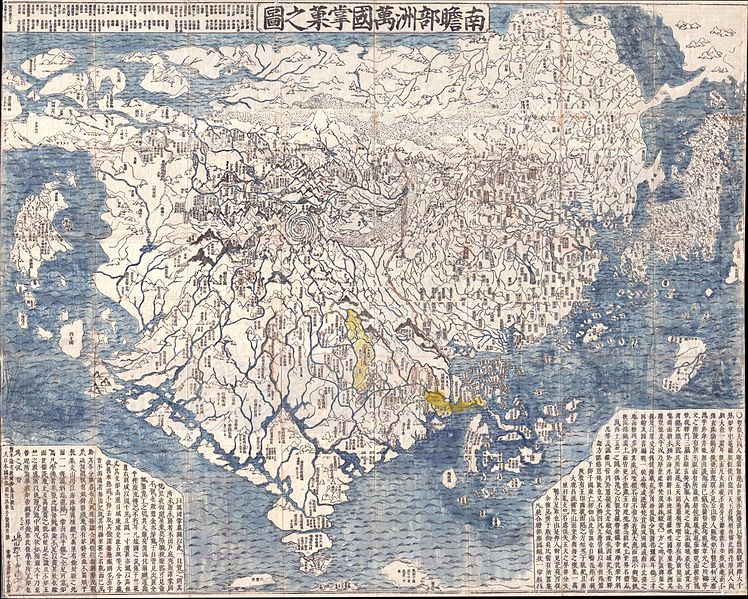Archivo:1710 First Japanese Buddhist Map of the World Showing Europe, America, and Africa - Geographicus - NansenBushu-hotan-1710.jpg
Apariencia

Tamaño de esta previsualización: 748 × 599 píxeles. Otras resoluciones: 300 × 240 píxeles · 599 × 480 píxeles · 958 × 768 píxeles · 1278 × 1024 píxeles · 2556 × 2048 píxeles · 5837 × 4678 píxeles.
Ver la imagen en su resolución original (5837 × 4678 píxeles; tamaño de archivo: 7,26 MB; tipo MIME: image/jpeg)
Historial del archivo
Haz clic sobre una fecha y hora para ver el archivo tal como apareció en ese momento.
| Fecha y hora | Miniatura | Dimensiones | Usuario | Comentario | |
|---|---|---|---|---|---|
| actual | 00:23 24 mar 2011 |  | 5837 × 4678 (7,26 MB) | BotMultichillT | {{subst:User:Multichill/Geographicus |link=http://www.geographicus.com/P/AntiqueMap/NansenBushu-hotan-1710 |product_name=1710 First Japanese Buddhist Map of the World Showing Europe, America, and Africa |map_title=Nansenbushu Bankoku Shoka No Zu (Outlin |
Usos del archivo
La siguiente página usa este archivo:
Uso global del archivo
Las wikis siguientes utilizan este archivo:
- Uso en en.wikipedia.org
- Uso en hi.wikipedia.org
- Uso en it.wikipedia.org
- Uso en www.wikidata.org
